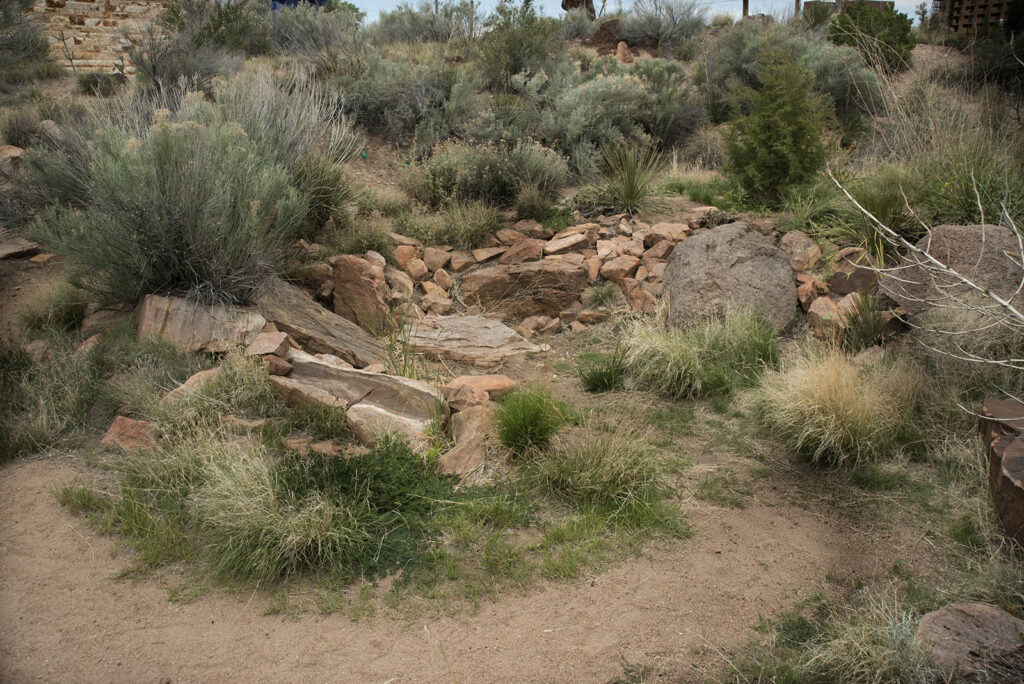A Tale of Two Monuments
In 1998, the 400th anniversary of the founding of Albuquerque by Spanish conquistadors, the city commissioned a monument to be placed in front of the Albuquerque Museum. The process was highly contentious. Although over the centuries Spanish and Native blood has mixed, consensually and otherwise, a challenge like how to memorialize colonization can send people into corners where the other – even the other part of you – becomes the enemy.

The solution in the end was to have two separate, adjacent monuments. La Jornada is a procession of thirty-three bronze figures in a kind of diorama depicting the arrival of the Spanish. Don Juan de Oñate, the controversial founder of Albuquerque, in helmet and armor, led the procession — until he was removed in June 2020 following a night of violence over his fate. (Oñate was the target of protests on behalf of Native Americans for his role as a cruel conqueror who cut off the left foot of dozens of young Acoma Pueblo men in retribution for the killing of a soldier.) The rest of La Jornada remains in place, a priest, a scout, men, women and children settlers, herders, an ox cart, and livestock.
Nora Naranjo Morse, poet and artist from Santa Clara Pueblo, was given an area fifty yards or so to the west for her own creation, Numbe Whageh, or Pueblo Center Place. She chose to leave the land natural and to carve a simple spiral foot path leading to a low point in the landscape, below ground level of the museum and La Jornada. At the bottom she added a small water feature, barely more than a trickle running over a smooth flat rock. Water-loving plants grew up creating a small oasis, treasured on a hot Albuquerque day. Morse’s poetic plaque introducing the natural installations speaks of the clouds and mountains, the thunder and lightning, the winds from four directions, the plants, animals, and life-giving water.

